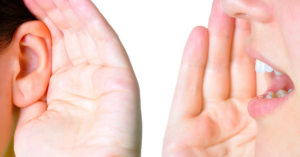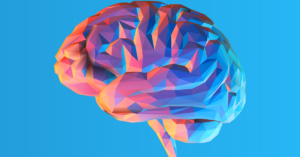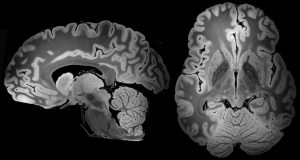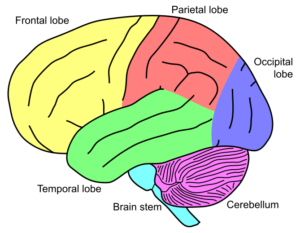
Snapshot: What is Articulation?
Articulation refers to the ability to produce speech sounds using the tongue, lips, jaw, and the roof of your mouth. All of these organs are also known as articulators. The Read More…
NAF has launched a petition on Change.org calling on the FDA to prioritize treatment options for rare diseases with urgent unmet needs, including Spinocerebellar Ataxia (SCA).
SIGN THE PETITION
A collection of resources for individuals and families affected by ataxia caused by stroke.
A stroke in the cerebellum can result in difficulties with balance, coordination, and speech. This condition is called ataxia. Ataxia caused by stroke is an acquired form of ataxia, meaning that the ataxia symptoms are the result of an injury or illness.
For complete information about symptoms, diagnosis, and treatment of Ataxia, visit our What is Ataxia? page. This page contains NAF’s resources that are specific to Ataxia caused by stroke. You can also learn more through The American Stroke Association.
Presented by Jeremy Schmahmann, MD, FAAN, FANA, FANPA
This webinar offers an overview of ataxia caused by stroke, including the typical diagnostic journey for those affected, what to expect for clinical care, and an overview of current research.
Approximately 800,000 people in the United States have a store each year. About 3% of cases, or 24,000 people, have a stroke in the cerebellum. Damage caused to the cerebellum during the stroke can result in ataxia.
Anyone can have a stroke. Some factors that can put you at higher risk of having a stroke include high blood pressure, obesity, smoking, poor diet, or physical inactivity. Other medical conditions, such as diabetes, heart disease, or blood clotting disorder can also increase the risk of stroke.
Short-term symptoms of cerebellar stroke can look different than other kinds of stroke. When someone has a stroke in their cerebellum, symptoms can include sudden nausea, vomiting, vertigo, loss of balance and coordination, trouble speaking, double vision, blurry or shaky vision, and headaches. If someone suddenly develops these symptoms, call 9-1-1 right away. It is important to get to a hospital as quickly as possible if you suspect someone is having a stroke.
Long-term Ataxia symptoms caused by stroke can vary. It depends on where the stroke happened in the cerebellum, the stroke’s size, and the person’s age. Three main groups of symptoms can happen – motor, vestibular, and cognitive.
Motor symptoms include problems with balance, coordination, and dexterity. Vestibular symptoms include trouble with eye movement (such as blurry, shaky, jumpy, or double vision), as well as dizziness and vertigo. Cognitive symptoms include changes in intellectual sharpness, emotional regulation, and social awareness.
It can be hard to predict how ataxia caused by stroke will progress over time. This is due to the variability of symptoms. However, with proper support and treatment, improvement is possible.
There are treatment options to prevent a stroke from happening again, including medication and treating stroke risk factors. There are also rehabilitation strategies to help treat ataxia symptoms, including physical therapy, occupational therapy, and speech therapy. Medications may also help treat motor, vestibular, and cognitive symptoms.
Quick diagnosis is essential for treating cerebellar stroke. If someone is suddenly experiencing cerebellar stroke symptoms – nausea, vomiting, vertigo, loss of balance and coordination, trouble speaking, double vision, blurry or shaky vision, and headaches – it is important to go to the hospital right away.
At the hospital, emergency room doctors will assess someone for visible signs of stroke. Then, they will order a CT scan to confirm a stroke is happening. They may also call a stoke specialist team, if one is available at the hospital. After the CT imaging confirms a stroke is happening, the physicians will suggest different options for immediate treatment. This may include medicine called tissue plasminogen activator (tPA) that can break up the blood clot causing the stroke.
If someone has ataxia after the stroke, they may undergo further testing with a neurologist. This may include a neurological examination and further brain imaging such as an MRI.
SCAsource provides Ataxia research news, directly from researchers to the Ataxia community. Visit SCAsource to see their full collection. Here is a collection of articles relevant to Ataxia Caused by Stroke.

Articulation refers to the ability to produce speech sounds using the tongue, lips, jaw, and the roof of your mouth. All of these organs are also known as articulators. The Read More…

Speech intelligibility refers to how many words can be correctly understood by a listener. For example, if someone says the phrase, “My name is John,” and a listener hears, “My Read More…

Brainstem – the part that connects and acts as a communicator between our brain and our spinal cord. The brainstem itself is composed of midbrain, pons, and medulla oblangata. Even Read More…

Nystagmus, also known as ocular ataxia, is a term that refers to uncontrollable eye movement- usually a repetitive cycle of slow movement in a specific direction followed by a quick Read More…

What is it? Magnetic resonance imaging (MRI) is a type of technology used to take detailed pictures of the body. It is commonly used to detect abnormalities in the body, Read More…

The cerebellum, often referred to as the “little brain”, is part of the brain that is located behind the cerebrum (forebrain). The cerebellum accounts for about 10% of the brain’s Read More…
Our generous donors help us fund promising Ataxia research and offer support services to people with Ataxia. Your gift today will help us continue to deliver on our mission to improve the lives of persons affected by Ataxia.
Join for FREE today! Become a part of the community that is working together to find a cure. As a member you will receive access to the latest Ataxia news with our e-newsletter and Generations publication.
